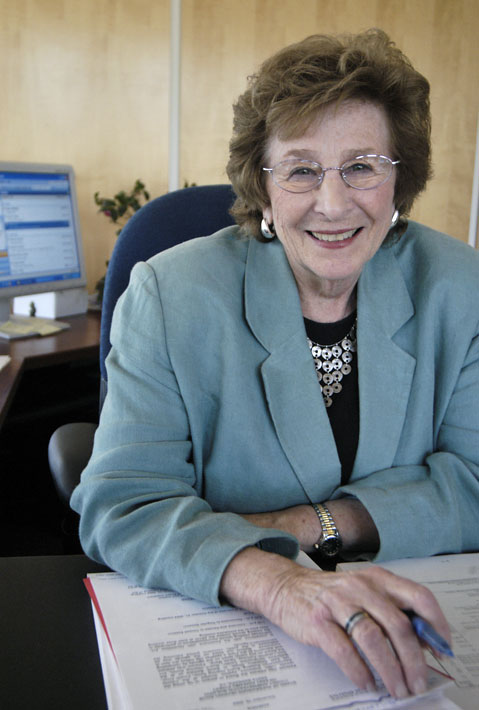There is some truth in the adage that political life attracts some of the best and some of the worst people. Naomi Schwartz was one of the very, very best. Her contributions to Santa Barbara County are well-known — thoughtful land-use planning, strong advocacy for social services and environmental quality, and a deserved reputation for personal integrity and intelligent and civil discourse. Even her opponents — and there were many — acknowledged her as an effective and worthy adversary.
My first public encounter with Naomi occurred in 1972 with the passage of Proposition 20, an initiative enacted to protect California’s coastline. It called for the establishment of regional coastal commissions to protect the coastline from overdevelopment while a state coastal plan was developed.

Unfortunately, then-governor Ronald Reagan, a critic of Prop. 20, appointed mostly like-minded opponents to regional commissions. In the tri-counties coastal region, there were 12 coastal commissioners, and only three of us were supporters of Proposition 20 — a classic case of the foxes guarding the chicken house. Many landowners, fearing a comprehensive coastal protection plan on the horizon, worked feverishly to get all sorts of commercial and residential coastal projects approved as quickly as possible through the regional commissions.
Enter Naomi, who, along with her friend Selma Rubin, created what they called “CoastWatch,” a grassroots organization to monitor and publicize the actions of the tri-county coastal commission, as well as to advocate before the commission for sensible coastal protection in pending building permits.
Initially, most commissioners were hostile to Naomi while sympathetic to the array of land-use attorneys, engineers, and planners hired by developers who appeared at commission hearings. But a remarkable thing happened over time: Naomi had the law on her side and an ability to respond knowledgeably to commissioners’ questions. And she didn’t always advocate a permit rejection — she often proposed compromises that could address commissioners’ concerns while upholding the basic provisions of Proposition 20.
As a result, Naomi almost single-handedly prevailed in many contentious adversarial proceedings. It was the most awe-inspiring advocacy work I had ever seen: a stay-at-home mom with no formal legal or environmental training, stopping many bad coastal developments and establishing a formidable reputation for knowledge of coastal law, for thorough research on pending projects, and for adept negotiation — and always with a pleasant disposition, and all of this as a volunteer.
Her outstanding track record at CoastWatch led within two years to her appointment by the State Assembly speaker to the very tri-counties regional coastal commission she had monitored, and ultimately she was appointed to the California Coastal Commission by Jerry Brown (during his first terms as governor) — where her fellow state commissioners soon elected her to serve as their chairperson.
While serving part-time on the regional and state commissions, she began a distinguished 18-year career in my Assembly and Senate district offices, most of the time as my chief of staff and trusted advisor. She dealt ably with a wide variety of issues — constituent matters, pending legislation, as liaison to local government and nonprofits — including numerous controversial state matters affecting Santa Barbara County communities. The Casmalia dump, offshore oil development, the crosstown 101 freeway project, and UCSB enrollment impacts are some that come immediately to mind. And she handled all of this, as well as her Coastal Commission duties, with aplomb and attention to detail.
Naomi also paid close attention and gained great satisfaction over the years from supervising and mentoring dozens of student interns from UCSB, SBCC, and Westmont College and Santa Barbara, San Marcos, and Dos Pueblos high schools. When I cross paths with these former interns, they speak with great affection and gratitude for the skills, both professional and personal, they gained from working with Naomi.
When the opportunity to run for county supervisor presented itself, Naomi hesitated. She had some serious health issues and had never run for office before, and she knew how daunting campaigns could be. She took the electoral plunge somewhat reluctantly, but her reputation preceded her, and she won easily in each of her three elections and served with great distinction on the Board of Supervisors.
I don’t think there has ever been a Santa Barbara County public servant held in higher regard than Naomi Schwartz. Her public accomplishments were many and her personal qualities of integrity, courage, diligence, and courtesy were appreciated by all who knew her.
She will be missed but remembered with love and respect.
Donations honoring Naomi Schwartz may be made in her name to the Environmental Defense Center, Transition House, or Santa Barbara Village. A public tribute is being planned for late July.
